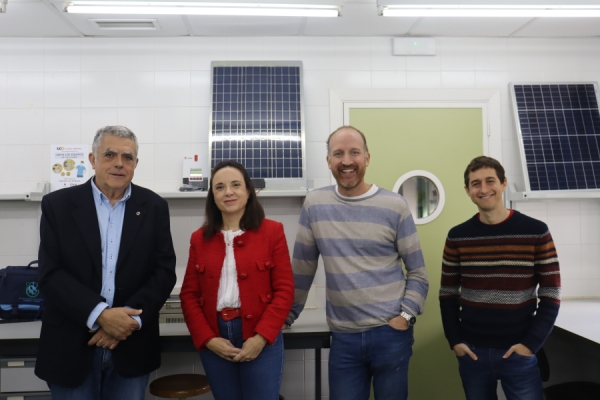The construction of photovoltaic plants on land traditionally put to agricultural use has been generating discussion and controversy for years. In a world that is increasingly demanding clean energy, but also food, the possibility has arisen of combining both activities so that, instead of competing, they might complement each other. This is “agrivoltaic” technology, which explores the possibilities of integrating solar collectors into agricultural plantations, thus generating energy without sacrificing crop production. A team from the University of Cordoba has now developed a model to test the integration of photovoltaic plants with solar collectors, arranged in rows,amidst those of a hedgerow olive plantation. Their conclusion is that the activities can not only coexist, but that theircombined productivity is actually greater; a win-win.
The project is the fruit of work by five researchers, members of two research groups: Marta Varo-Martínez, Luis Manuel Fernández de Ahumada and Rafael López Luque, withthe Physics for Renewable Energies and Resources group; and Álvaro López-Bernal and Francisco Villalobos, with the Soil-Water-Plane Relations group, at the María de Maeztu Unit of Excellence, in the Department of Agronomy. The team explains that simulation models such as the one developed are very powerful tools in research because they make it possible to test the effectiveness of an idea before putting it into practice in the "real world" with the consequent cost and time savings. In this case, models that simulate oil production by a hedgerow olive plantation have been combined with others that make it possible to predict how solar collectors, arranged in rows, intercept radiation and convert it into electrical energy.
If the ultimate goal is to optimize land use as much as possible, this model has proven that agrivoltaics deliver. The study's main conclusion is that joint production is more efficient than it would be separately. In a kind of mutualism, both activities benefit: agricultural production, due to the shading produced by solar collectors, which also act as windbreaks, without competing for available water; and photovoltaic production, due to the reduction in the temperature of solar collectors as aresult of the plants' evapotranspiration, which can have animpact on greater energy production.
As the researchers explain, the model developed makes it possible to test different combinations of collectors, varying their heights and widths, and the spacing between the rows, analyzing each configuration to choose the most advantageous final design. Although in most of the scenarios studied the results arepositive, there are many factors that must be taken into account. For example, the study shows that densifying the use of land, narrowing the rows, and increasing the width and height of the collectors, favors more efficient radiation use by the solar collectors and olive grove hedges, but the consequent reduction of free space could hinder some olive grove management operations, or access by agricultural machinery. The key, as in any symbiosis, is balance.
Reference: M. Varo-Martínez, A. López-Bernal, L. M. Fernández de Ahumada, R. López-Luque, F. J. Villalobos. ‘Simulation model for electrical and agricultural productivity of an olive hedgerow Agrivoltaic system'. Journal of Cleaner Production 2024, Volume 477. https://doi.org/10.1016/j.jclepro.2024.143888


